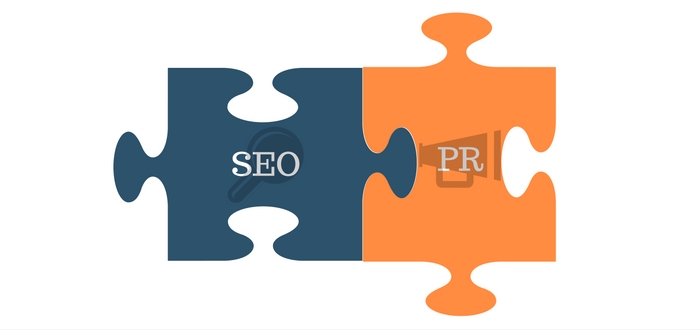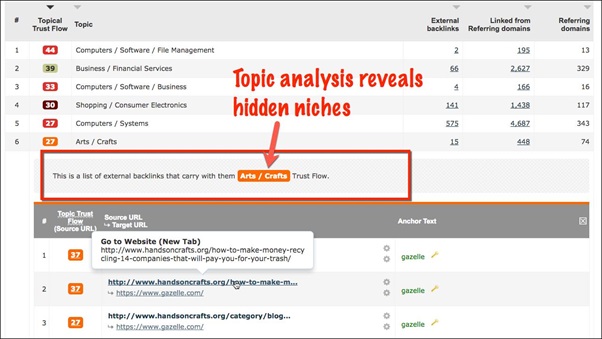
Editorial links from major media outlets are the pinnacle of SEO and PR working together. The client site gets an immediate hit from publicity in a major outlet, plus an SEO boost with a link from a trusted website.
A lot has been written on SEO and PR complementing each other – and even about one of these disciplines ‘taking over’ the other. The debate has been covered from both the PR side and the SEO site.
Writing in PR week, “Why PR Pros Need to integrate social SEO and PR“, Ronn Torossian, founder of 5WPR says, “digital marketing and SEO need to become more PR-orientated, and traditional PR needs to become savvier using social media platforms and sites”.
And writing on SearchEngineLand.com, “5 Ways SEO and PR should be working together“, Erin Everard sales, “good content and reach are an integral part of SEO success – and those things or something PR and knows all too well”.
I believe there are three things going on:
- SEOs are learning how to use PR techniques as part of their work
- PRs are also learning SEO techniques to help their work
- SEO teams and PR teams are bringing their individual skills together in collaborative campaigns.
Each of these trends has the potential to win editorial links. But getting such links is not easy, even though they appear on a daily basis.
So I looked at 10 examples of articles that contained editorial links taken from major news sites, the New York Times, BBC, Washington Post and the Guardian. These articles contained a total of 20 external links to a variety of sites.
What insights can the Majestic suite of tools give to both PR and SEO professionals? I used the 10 articles and the 20 external links featured to explore – I’ll highlight some of my conclusions and suggest research that would give further insight.
1. Does major media favour large companies over small?
Getting media coverage in a major media outlet is a big deal – which means that inexperienced people doing PR may think that it is beyond them. As a result they don’t try.
But that’s not true – even a rookie can score coverage in the media.
I took the 20 websites featured in our sample articles and entered them into the Bulk Backlinks tool. This showed that many small companies and start-ups were featured – 52% of the sites had less than 500 referring domains:
That lesson here is not to assume that you are too small to get coverage – go ahead and make your pitch – if it’s newsworthy you stand as much chance as anyone.
2. Single articles contain multiple editorial links
I also found that the example articles featured multiple links – one article from the New York Times featured 9 external links.
Journalists want to be balanced in their coverage and if a press release catches their eye, they may well do a Google search to find competitors to include in their article.
One lesson from that is to imagine the searches that journalists might do and optimise accordingly.
3. Backlink analysis reveals editorial context
One of the great benefits of link analysis for PR people is the ability to see the link – and thus the coverage – in context. Link analysis provides a unique access to the page on which the link sits and the page to which it points.
This gives direct evidence of why the link was given – and gives you something to emulate.
4. Filtering on the ‘News Topic’ reveals competitor strategy
Another valuable benefit of link analysis for PR is the ability to filter on ‘News’ topics. This screenshot comes from an analysis of iFixit.com – I entered the site into Site Explorer. Hit the ‘Topics’ tab. Then filtered on the word ‘news’:
This analysis gives a fantastic picture of competitor activity and digging into it can give great insight.
5. Further media prospects are revealed with Clique Hunter
Media articles that include multiple editorial links can be used to find further opportunities. The websites featured are by definition in the same business, and they are active in looking for publicity. Therefore entering them into the Clique Hunter tool will reveal further media coverage – and opportunities for you!
As in this example that leads to coverage in Fast Company:
This is a great way to look for further media opportunities with the added benefit of knowing that the media outlets identified are all willing to give editorial links.
6. Topic analysis suggests niche opportunities
Finally, topic analysis can suggest many niche opportunities that might not have already been on your radar.
In this example using Gazelle.com, we can see an unexpected (perhaps) niche in the arts/crafts market:
Majestic categorises websites into over 800 different topics – this has the potential to uncover a rich store of niche opportunities – journalists, bloggers, specialist outlets in niches that could remain hidden in traditional media databases.
Finally, let’s look at two articles that contained multiple links
The BBC article, ‘Repair businesses provide antidote to throwaway culture’ links to 3 external sites:
Click through and have a look at this article.
- How do you think those links got there?
- What do you think the journalist was trying to achieve?
- What would you pitch to attract that journalist’s attention?
And the New York Times article that included 9 external links (and numerous internal ones) was Tiny Home Test Drive:
This is a substantial piece that is very different in nature to the BBC article. So here’s a few questions:
- How is the New York Times article different from the BBC article?
- Who do you think was the main influencer behind the article?
- How do you think all those editorial links appear?
- In what way was the experience of the journalist different?
By answering these questions you’ll go some way to getting inside the head of the journalist, the editor and the companies who helped make these articles appear.
In the 2nd part of this article, I’ll be exploring these questions further, I’ll reveal the other 8 articles we used and I’ll be summarising the lessons we can all learn to up our chances of getting editorial links.
If you’ve any comments or questions, please leave them in the comments below. Even better, if you’ve been successful is getting editorial links, please share your experiences in the comments too.
Save
Save
















Great piece as ever Ken 🙂
I’ve been sharing this kind of advice to PRs for years (and recommending using Majestic to do it). Using Trust Flow to prioritise journalists and outlets to target is another useful SEO PR technique with Majestic.
Feedback I get sometimes from PRs (especially re: big media outlets) is that journalists won’t run links to 3rd parties – they’ve been told from on high to link internally to their own site content – surprising given Google’s desire to see a natural link profile (a site that only had inbound links and never itself linked to anybody would be odd). But it still clearly goes on. Nevertheless, no harm in asking for the link every time – you never know, you might just get it 🙂
August 11, 2016 at 1:26 pmHi Andrew,
You’re right – most media sites only link internally but I think that might be changing. For example, the Boston Globe never used to link out to sites – but now they frequently do. As you say, asking for an editorial link is the first step in getting one – but creating something that’s worth linking to is another. In my next post I’ll share details of the 10 editorial links and some of the insights we can draw from them.
Thanks for your input,
Cheers,
Ken
August 12, 2016 at 8:45 am